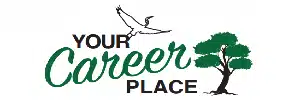Understanding Debt Types
Could you imagine a world without borrowing? Debt is a fundamental part of our economic systems, from governments to individuals. However, not all debts are created equal, and understanding the nuances can make a big difference in managing your finances.
Personal Debt and Its Varied Forms
Secured Debt
This type of debt is tied to an asset considered collateral. If you fail to repay the loan, the lender can repossess the asset to cover the losses.
Example: A mortgage is a secured debt using the house as collateral.
Unsecured Debt
Unsecured debt has no collateral backing. Lenders issue funds based on your creditworthiness and other factors but have no specific asset to claim if you default.
Example: Credit card debt is unsecured, as there is no collateral. If you stop making payments, the credit card company has no immediate asset to seize (though they can take legal action).
Commercial and Government Debt
Bonds
When a company or the government needs to raise money, they may issue bonds. Investors purchase these bonds, essentially lending money to the issuer, which, in return, promises to repay the principal amount with interest by a specific date.
Example: You can buy a U.S. Treasury bond, lending money to the government, which it will pay back with interest.
The Impact of Interest Rates
Interest rates significantly affect the total amount you will end up paying back. There are two main types of interest rates:
Fixed Interest Rate
As the name suggests, the rate remains constant throughout the loan. This predictability can be reassuring for long-term loans.
Example: A fixed-rate mortgage might have an interest rate of 4% for the 30-year term.
Variable Interest Rate
This can change over time based on prevailing economic conditions. It makes your repayment amounts less predictable.
Example: A variable-rate credit card may start with an introductory rate of 0%, which jumps to 18% after the first year.
Understanding Promissory Notes
A promissory note is a form of debt that is essentially an IOU. It spells out the loan terms, including the amount borrowed, interest rate, repayment schedule, and the consequences of non-repayment.
Example: A student loan often starts as a promissory note detailing the obligations of the student-borrower.
Prioritizing Debts – Which to Pay Off First?
It can be tricky to decide which debt to pay off first, but the decision often comes down to interest rates and the consequences of non-payment:
- High-interest debt, such as credit card debt, typically should be prioritized since it compounds quickly.
- Secured debts like mortgages might be a lower interest rate but failing to pay can result in losing your home.
Short-term vs. Long-term Debt
Short-term Debt
These are debts that are typically due within a year and can include credit card debts or short-term personal loans.
Example: A high-interest payday loan intended to be paid off at your next paycheck.
Long-term Debt
Long-term debts are payables over an extended period, often several years. These usually carry lower interest rates than short-term debts.
Example: Most mortgages and student loans are forms of long-term debt.
The Role of Credit Scores
Your credit score is a numerical expression based on an analysis of your credit files. It represents an individual’s creditworthiness. Lenders use credit scores to evaluate the probability that a person repays debts.
A high credit score suggests high creditworthiness, potentially leading to lower interest rates and better loan terms. In contrast, a low credit score can mean high interest rates and stricter lending conditions.
Recap
Understanding the different types of debt is crucial for effective debt management and financial stability. By knowing what each debt entails, you can make more informed decisions on borrowing and repaying debts, leading to a sound financial foundation.
To do: Identify and categorize your existing debts into different types.
Short step-by-step plan:
- Gather all your financial statements and documents listing your debts, including credit card statements, loan documents, and any other outstanding balances. For example, Collect your credit card statements, car loan documents, and student loan information.
- Review each debt and categorize it into different types, such as credit card debt, student loans, mortgages, car loans, personal loans, etc. Example: Identify and list all your credit card debts separately from your student loans and car loans.
- Note down each debt’s interest rates and payment terms to understand their impact on your overall financial situation. Example: Write down the interest rates for each debt and the minimum monthly payments required.
- Consider the priority of each debt based on factors such as interest rates, outstanding balances, and their impact on your financial health. For example, Rank your debts from the highest interest rate to the lowest and consider prioritizing the repayment of high-interest debts.
🍏The best solution, 10/10: This practical task will help you clearly understand the types and impacts of your debts, enabling you to make informed decisions about managing and paying them off effectively.
